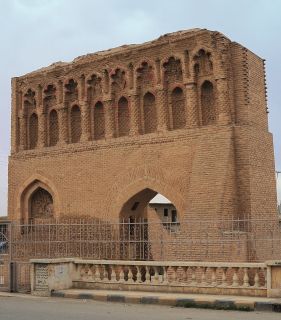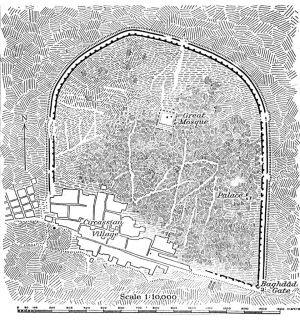Rakka City Walls
Syria Raqqa 10,11,12th Century
Abbasid, SeljukOlarak da bilinir.
Abbasid, Seljuk
1050-1150
The settlement of Raqqa is near the ancient city of Kallinikhos. The city was developed and entarged by Al-Refika. When the Muslims came ta the region, instead of settling in the old city, they built their own city near to it. The ancient city lost its importance over time and a new settlement developed. it began to be called Raqqa from 772 onward. Harun Rashid, who did not like living in Baghdad, moved the state capital to Raqqa. The city began to lose its important position progressively after the era of Hanın Rashid. However, it flourished economically during the Seljuk period. The driving factor behind this was the fact that the city became an important center tor ceramic production. The city walls were repaired during the reign of Zangis, a Seljuk Atabeg. The existing city walls are made of brick and mud brick. The city walls are reinforced by semi-circutar towers. The Zengid Oynasty of Nur ad-Din essentially rebuilt the Raqqa Cuma Mosque. The Baghdad Gate is the most remarkable among the sections of the city walls which have survived ta the present day it was also restored by the Zengids.
Archaeological excavations, which have been carried out since 1950, uncovered many houses belonging to the Abbasid period. Stucca walls in the Samarra style can be seen in the houses here. A palace belonging to the 12th century, similar ta Seljuk palaces with three iwans, was also uncovered during the excavations.
AI-Khalaf ve Kohlmeyer, K., "Untersuchungen zu ar-Raqqa-Nikephorion/Callinicum,” Damas. Mitt, 11, (1985), s. 134-162
Creswell, K., Cameron A., Muslim architecture of Egypt, Oxford, 1959, Cilt:2, s.27 Heidemann, S., Die Renaissance der Stadte in Nordsyrien und Nordmesopotamien: Stadtische Entwicklung und wirtschaftliche Bedingungen in ar-Raqqa und Harran von der Zen: der beduinischen Vorherrschaft bis zu den Seldschuken, Leiden, 2002 Heidemann ,S., "The History of the lndustrial and Commercial Area of 'Abbasid AIRaqqa, called AI-Raqqa AI-Muhtariqa," Bull. SOAS, lxix/1 (2006), s. 33-52 Meinecke, M., "The Architecture of ar-Raqqa and its Decoration," Colloque international d'archeologie islamique: IFAO, le Caire, 3-7 fevrier 1993, s. 140-148
Toueir, K., "Der Qa r al-Ban t in ar-Raqqa," Damas. Mitt, 11, (1985), s. 297-319



